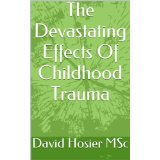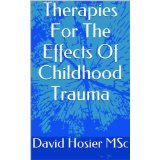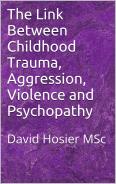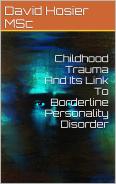Tags
The Association Between Childhood Trauma and Borderline Personality Disorder (BPD).
Many research studies have shown that individuals who have suffered childhood trauma and neglect frequently develop BPD as adults.
WHAT IS BPD?
BPD sufferers experience a range of symptoms which are split into 9 categories. These are:
1) Extreme swings in emotions
2) Explosive anger
3) Intense fear of rejection/abandoment sometimes leading to frantic efforts to maintain a relationship
4) Impulsivity
5) Self-harm
6) Unstable self-concept (not really knowing ‘who one is’)
7) Chronic feelings of ’emptiness’ (often leading to excessive drinking/eating etc ‘to fill the vacuum’)
8) Dissociation ( a feeling of being ‘disconnected from reality’)
9) Intense and highly volatile relationships
For a diagnosis of BPD to be given, the individual needs to suffer from at least 5 of the above.
A person’s childhood experiences has an enormous effect on his/her mental health in adult life. How parents treat their children is, therefore, of paramount importance.
BPD is an even more likely outcome, if, as well as suffering trauma through invidious parenting, the individual also has a BIOLOGICAL VULNERABILITY.
In relation to an individual’s childhood, research suggests that the 3 major risk factors are:
– trauma/abuse
– damaging parenting styles
– early separation or loss (eg due to parental divorce or the death of the parent/s)
Of course, more than one of these can befall the child. Indeed, in my own case, I was unlucky enough to be affected by all three. And, given my mother was highly unstable, it is very likely I also inherited a biological/genetic vulnerability.
EXAMPLES OF DAMAGING PARENTING STYLES:
1) Dysfunctional and disorganized – this can occur when there is a high level of marital discord or conflict. It is important, here, to point out that even if parents attempt to hide their disharmony, children are still likely to be adversely affected as they tend to pick up on subtle signs of tension.
Chaotic environments can also impact very badly on children. Examples are:
– constant house moves
– parental alcoholism/illicit drug use
– parental mental illness and instability/verbal aggression
2) Emotional invalidation. Examples include:
– a parent telling their child they wish he/she could be more like his/her brother/sister/cousin etc.
– a parent telling the child he is ‘just like his father’ (meant disparagingly). This invalidates the child’s unique identity.
– telling a child s/he shouldn’t be upset/crying over something, therefore invalidating the child’s reaction and implying the child’s having such feelings is inappropriate.
– telling the child he/she is exaggerating about how bad something is. Again, this invalidates the child’s perception of how something is adversely affecting him/her.
– a parent telling a child to stop feeling sorry for him/herself and think about good things instead. Again, this invalidates the child’s sadness and encourages him/her to suppress emotions.
Invalidation of a child’s emotions, and undermining the authenticity of their feelings, can lead the child to start demonstrating his/her emotions in a very extreme way in order to gain the recognition he/she previously failed to elicit.
3) Trauma and abuse – people with BPD have very frequently been abused. However, not all children who are abused develop BPD due to having a biological/genetic RESILIENCE and/or having good emotional support and validation in other areas of their lives (eg at school or through a counsellor).
Trauma inflicted by a family member has been shown by research to have a greater adverse impact on the child than abuse by a stranger. Also, as would be expected, the longer the traumatic situation lasts, the more likely it is that the child will develop BPD in adult life.
4) Separation and loss – here, the trauma is caused, in large part, due to the child’s bonding process development being disrupted. Children who suffer this are much more likely to become anxious and develop ATTACHMENT DISORDERS as adults which can disrupt adult relationships and cause the sufferer to have an intense fear of abandoment in adult life. They may, too, become very ‘clingy’, fearful of relationships, or a painful combination of the two.
Later posts will look at possible therapeutic interventions for BPD as well as ways the BPD sufferer can help himself or herself to reduce BPD symptoms.
I hope you have found this post of interest.
Above eBooks now available on Amazon for immediate download. $4.99 each (except Workbook, priced at $9.79). CLICK HERE.
Best wishes,
David Hosier BSc Hons; MSc; PGDE(FAHE).












thank you I appreciate the info